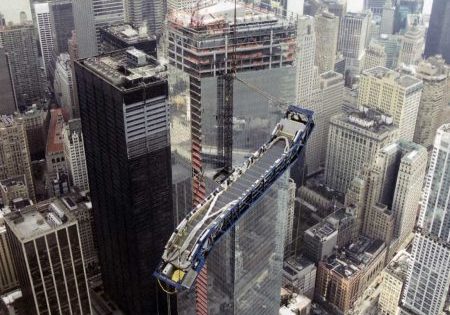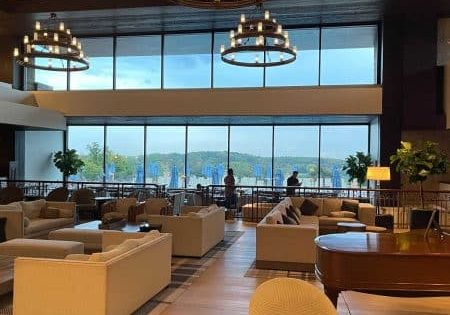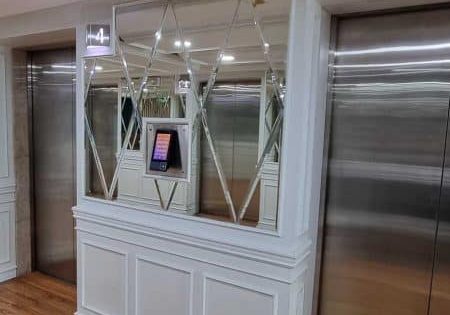In this Industry Dialogue, VDA CEO Gavin Campbell shares details about his life and the VT consultancy’s acquisition strategy.
“What does this mean for me?” It’s a question every company employee undergoing a merger or acquisition (M&A) asks. They fear the job they like might alter drastically or their position will become redundant and their job eliminated. While these scenarios certainly happen, in most cases M&As are a good thing for both employee and employer. Just ask Gavin Campbell, who took over the CEO role at VDA, Inc. (VDA) from M. Wade Smith, who retired in 2022 (Looking Back on a “Great Run”). “A successful merger is a win for both companies and the customers they serve in a local market,” Campbell says. A native of British Columbia (BC), Canada, now based in Chicago, Campbell joined the East Hanover, New Jersey-headquartered VDA from Intertek Group plc, a British multinational assurance, inspection, product testing and certification company, where he served as president responsible for two global business lines with 140 locations in eight countries. Although he comes from outside the vertical-transportation (VT) industry, Campbell is adept at growing businesses, both organically and through acquisitions. When Campbell was named CEO, VDA President Rob Cuzzi said “[Campbell] has the knowledge and skillset to expand on the success VDA has built over the past 40 years and will help us reach our next level.” That next level will undoubtedly entail further M&A.
Prior to Campbell joining the company, VDA had recently acquired several VT companies. The consultancy currently employs more than 350 professionals in over 35 locations servicing all 50 states. Roughly half have joined through acquisitions.
Campbell observes employees who joined VDA through an acquisition are, by and large, pleased with the outcome. “Many of the individuals I have spoken with are excited about the professional-development opportunities they are now afforded because they are now part of a larger organization,” he says. While declining to provide an exact number, Campbell says VDA has a “very comprehensive list” of companies in the VT consulting and inspection service business under consideration. He took the time to speak with your author about himself, his career and plans to grow VDA.
KW: Where have you lived and where did you go to school/college?
GC: I was born in Langley, BC, which is about 30 min from downtown Vancouver. I grew up on a 160-acre farm until I was about 10. When I was older, I moved to West Vancouver. I graduated from the BC Institute of Technology in engineering, specializing in building sciences. While working for Intertek in Colquitlam, my wife and I lived in Langley, about 32 km south. My career then provided an opportunity for my family to move to San Antonio, Texas, where we lived for five years before moving to Chicago 15 years ago.
KW: Tell me about Intertek — the company, your role there and how it prepared you for the CEO role at VDA. Were M&A involved?
GC: Intertek is a global network of laboratories and technical experts that provide assurance, testing, inspection and certification services across many industries. The company has 40,000 employees in 1,000 locations in more than 100 countries. I started my career with Intertek working in its Vancouver Building Products laboratory. From there, I moved to the sales side, where, after several years and a couple of moves throughout North America, I became vice president of sales for the Commercial & Electrical division. In 2011, I was asked to run the Building Products division (where I started my career) and, over the next 10 years, grew the business from US$25 million to more than US$500 million through a combination of organic and acquisitive growth. Prior to leaving Intertek, I was president of two global divisions: Building & Construction and Transportation Technology, with responsibility for US$780 million in revenue and more than 3,000 employees. My time at Intertek prepared me well for my new role as CEO at VDA because VDA is in the exciting position of accelerated growth. By leveraging a combination of organic and acquisitive growth, I have plenty of experience in taking a business through the journey. At Intertek, I was responsible for four acquisitions, ranging in size from US$5 million to US$330 million. My responsibilities included target identification, successful closure of the deal and, most importantly, successful integration of the business into Intertek.

“Regardless of size, every acquisition requires a tremendous amount of communication and research by both sides to ensure the deal is a win for the owners, the employees and the customers.”
The US$5-million deal marked a turning point in my life and taught me a lot about relationships and how each player fits. Since I was leading Intertek’s construction materials sales team at the time, it was agreed that I would go to San Antonio, Texas, to be part of the integration team. I remember having a great relationship with the founder/owner. He was more on the operations side, and I was on the sales side. This was a business that was doing approximately US$200,000 a month in sales. Within two years, we were doing US$800,000 a month. We quadrupled business in two years through a combination of the sales team bringing in the work and the owner/founder finding a way to get it done. From there, I assumed additional responsibilities beyond Building & Construction and ended up becoming director of sales for the entire South.
KW: What happened next?
GC: At probably about the four-year mark of living in San Antonio, I was asked to become director of sales for the West. My wife and I had just had our daughter and were looking forward to moving out West. We were like, ‘Oh, we’re going to get closer to our families again!’ I was traveling out to Orange County, California; San Francisco; Portland; and Seattle. We were going to sell our house in Texas and, as soon as it sold, move to L.A. My boss at the time called and told me he had a six-month assignment for me in Chicago while our house was up for sale. Well, it sold within a week, and we shipped half of our stuff to a storage facility in L.A., and the other half came with us to Chicago, including two dogs and our newborn daughter. That was 15 years ago. I still think I have some stuff in the attic in boxes that say L.A. on them!
KW: Do you like Chicago?
GC: I love it! When we first moved here, little did I know that my boss had planned all along that I would become vice president of sales for not just North America, but everywhere else. That included offices in Mexico City and all across Canada. I also ran teams in China and Europe. So, Chicago was the perfect city because it’s a class-A business city in terms of size and reputation in the world market. I have always lived within 30 min of O’Hare and can get anywhere in the country and the world very easily. Another thing I like about Chicago is that Midwest people are very authentic and friendly, which aligns with my Canadian friend group. It’s just been wonderful. We subsequently had a son, who is now 14. Both my daughter and son have only known Chicago, but my daughter, who’s 16, always reminds her friends that she’s a Texan.
KW: Speaking of geography, VDA has talked about not being bound by geography when it comes to M&A. I assume this means North America, but what about beyond?
GC: A lot of people in the financial community ask me that because it’s about the total addressable market for the VT industry and specifically, VDA. We all know there are elevators everywhere, whether you’re in the Middle East, Southeast Asia or Europe. But, my sense right now is that there is so much opportunity and demand for our services just in the U.S., where VDA does the lion’s share of its work, that we will focus on this market. That’s not to say that when we work in construction and design with international firms, they don’t ask us to participate in projects all over the world. We operate internationally, but we’re not trying to plant flags in different parts of the world at this time.
KW: What is VDA looking for in future acquisitions?
GC: Our discussions with potential acquisition targets are focused on how each firm will complement one another to better serve our collective client base. To complement VDA’s existing business model, we’re looking for firms that specialize in the VT consultancy and inspection services space.
KW: Tell me about a “typical” acquisition if there is such a thing.
GC: Every acquisition is unique, based on size and ownership structure. Regardless of size, every acquisition requires a tremendous amount of communication and research by both sides to ensure the deal is a win for the owners, the employees and the customers. What I’ve found in the VT industry is that, because it’s so tight-knit and everybody knows everybody, a lot of what’s involved is just good, old-fashioned networking and asking questions. We may hear someone is looking for a path out of a business they started with their family and want a great home for their employees. So, a lot of the process is just organically working through the relationships that already exist. That’s something that makes the elevator world so special.
KW: Is there a target date for when the next VDA acquisition will occur?
GC: It’s really hard to say we’re going to close a deal on such-and-such a date because there are a number of factors that go into that. What I will say is that VDA has a very comprehensive list of potential acquisition targets that we are constantly updating based on conversations we’re having. With every one of those firms, we’re at a different phase. With some, it might be a letter of intent or we might have an NDA (nondisclosure agreement) signed where we can share information with one another but not with anyone else. There are also companies that say, “Call us in two years because we’re not ready now, but we will be.” VDA has a healthy and active target list, and we hope to close on several deals relatively soon.
KW: When a company is acquired, does it typically keep its name and identity? Why or why not and what factors determine this?
GC: Every situation surrounding brand strategy is different and based on factors that need to be considered when deciding to keep the original name of the acquired company. The decision is made on a case-by-case basis where topics such as brand equity in a market or contractual obligations are considered. Maintaining the identity or culture of a company is another important factor in the integration process because many customers choose to work with people, and it’s important to maintain a culture where your employees are engaged in providing high-quality service. Post-integration, the individuals who excel at customer service and operate with a high level of engagement and integrity seem to always advance to greater roles, whether they were part of the original business or were acquired along the way.
KW: What is most challenging and rewarding about acquiring another company?
GC: The most challenging aspect is working through all the details to ensure successful integration. It is always the goal to ensure that the unique aspects of what made the individual companies successful are preserved and that, collectively, both businesses benefit from the merger. The most rewarding part of an acquisition is witnessing the professional-development opportunities for the individuals who want to take on additional responsibilities.
Get more of Elevator World. Sign up for our free e-newsletter.










